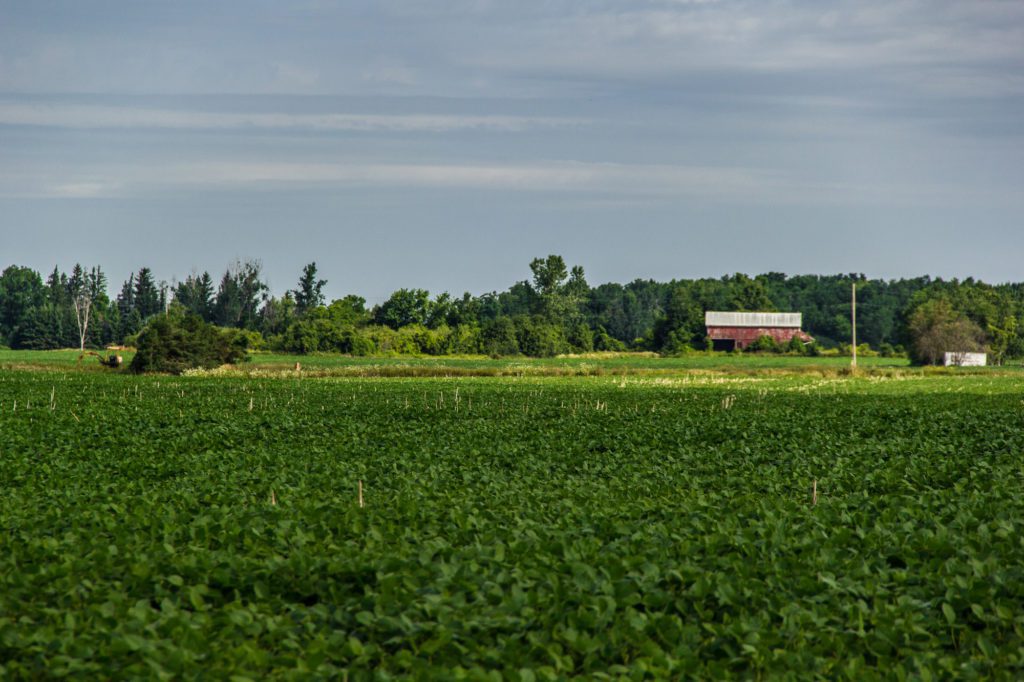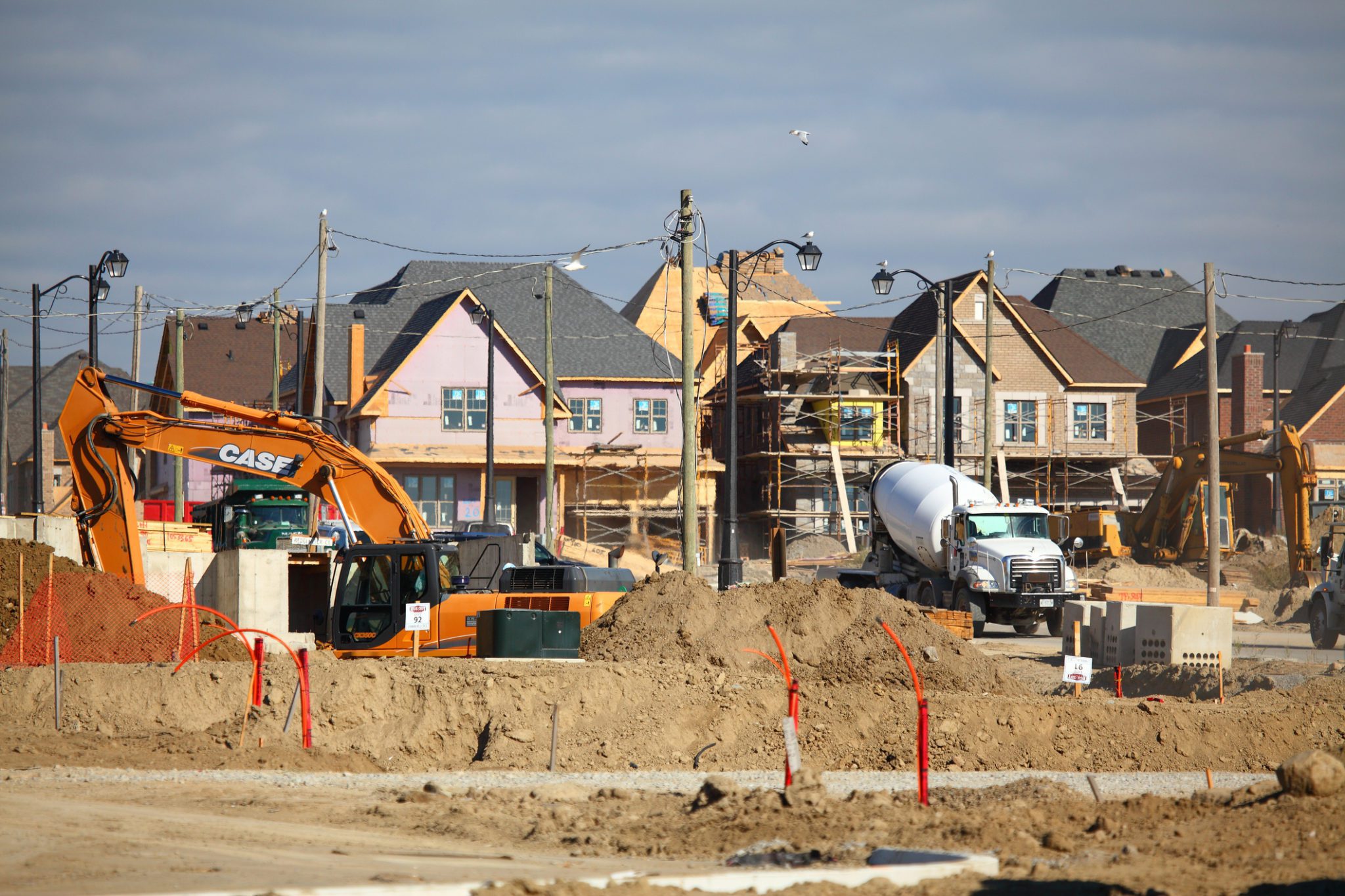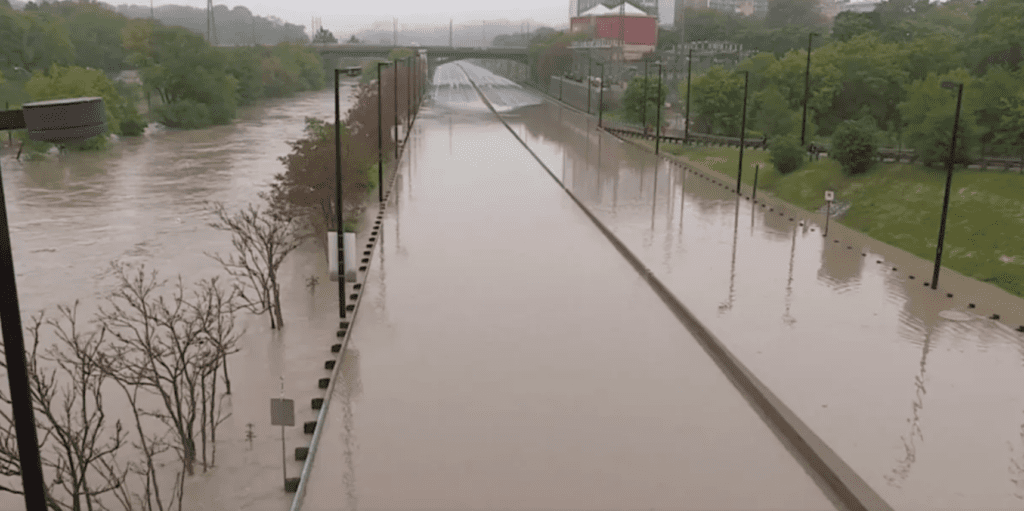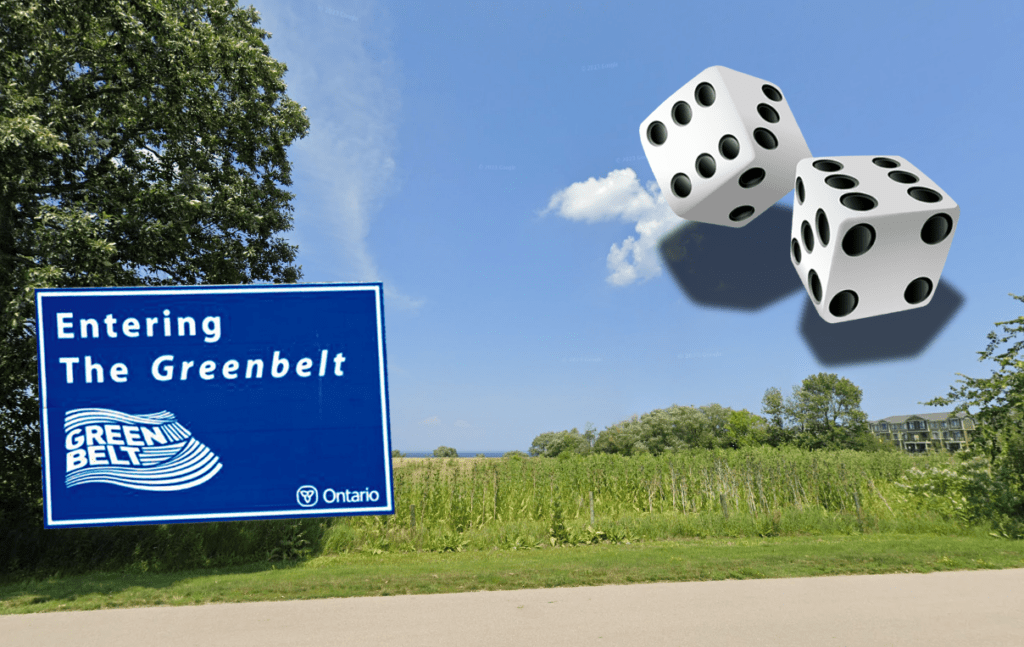The outcome of this year’s provincial election will determine how Ontarians will live, work, relax, and get around for the next three decades.
Right now, the province is poised on the edge of disaster. Current plans would push our environment and communities past the breaking point, locking us into 30 years of the same highway-and-sprawl-driven approach that’s already paved huge swathes of our best farmland and destroyed much of our most diverse and sensitive wildlife habitat. They will push dignified housing even further out of reach for more Ontarians, and consign most Ontarians to wasteful suburbs where greenhouse gas emissions are sky high because we can’t easily commute, shop, or run errands without relying on a car.


The good news is that we have one last reliable chance to change course. Depending on the composition of the next Provincial Parliament, Ontario can still choose to protect what remains of its good farmland and natural heritage from further sprawl, and to use the next 30 years of new homes, new workplaces, and new infrastructure to retrofit existing carbon-intensive and increasingly unaffordable suburban neighbourhoods into carbon-neutral complete communities where everyone can find a dignified, affordable home home, and where most people can live comfortably without a private automobile.
Pledge to Vote For The Environment on June 2
Why does so much depend on the outcome of this particular election?
It’s because many of the pivotal decisions set to be made over the coming one to four years would be difficult to reverse after the fact. For example:
- Under cover of the pandemic, the province introduced “the Big Sprawl” a set of policies designed to exclude railroad cities and towns in the Greater Golden Horseshoe into a vast and costly expansion of their settlement area boundaries. This means sprawl developers will be able to “lock in” 30 more years of sprawl, destroying vital greenspace like the Carruthers Creek Headwaters, if Ontario’s government doesn’t slam the brakes on the rigged Municipal Comprehensive Review process within a month after this June’s election.
- Despite massive opposition from local communities, the Ontario government has revived discredited suburban highway schemes like Highway 413, which would squander at least $6 billion in public funds to subsidize sprawl onto prime farmland stockpiled by speculators. Unless we stop it, this will worsen traffic overall, while shaving a mere 30 seconds (a time savings more easily accomplished by tweaking existing highway rules) off the average car trip. Unless the election forces a reversal in course, the wide swathes of Greenbelt and natural heritage, including endangered species habitat, along its route are likely to be bulldozed well before 2026.
- Thanks to the gutting of the Conservation Authorities Act and Endangered Species Act and supercharging of sprawl Minister’s Zoning Orders (MZOs), the Minister of Municipal Affairs and Housing could sacrifice any number of wetlands, streams and other habitats for warehouses and parking before Ontarians get another chance to replace their MPPs.
This June’s election is our chance to make Ontario change course before it’s too late. Ontario’s communities can grow in a way that doesn’t destroy our precious Greenbelt and farmland, and instead creates vibrant, public transit-oriented communities and walkable neighbourhoods where people want to live and work – but it’s up to us to demand it.
In the coming weeks, we’ll be asking all of Ontario’s major political parties some serious questions designed to reveal whether, if elected, they will protect the environment and stop runaway sprawl, and we’ll be sharing their responses with you to help you make your decision.
This election is about the future you want for your community. Take the pledge to vote for a more sustainable future – vote for the environment.







